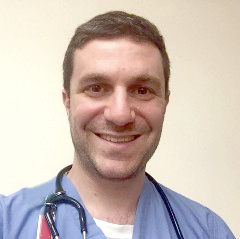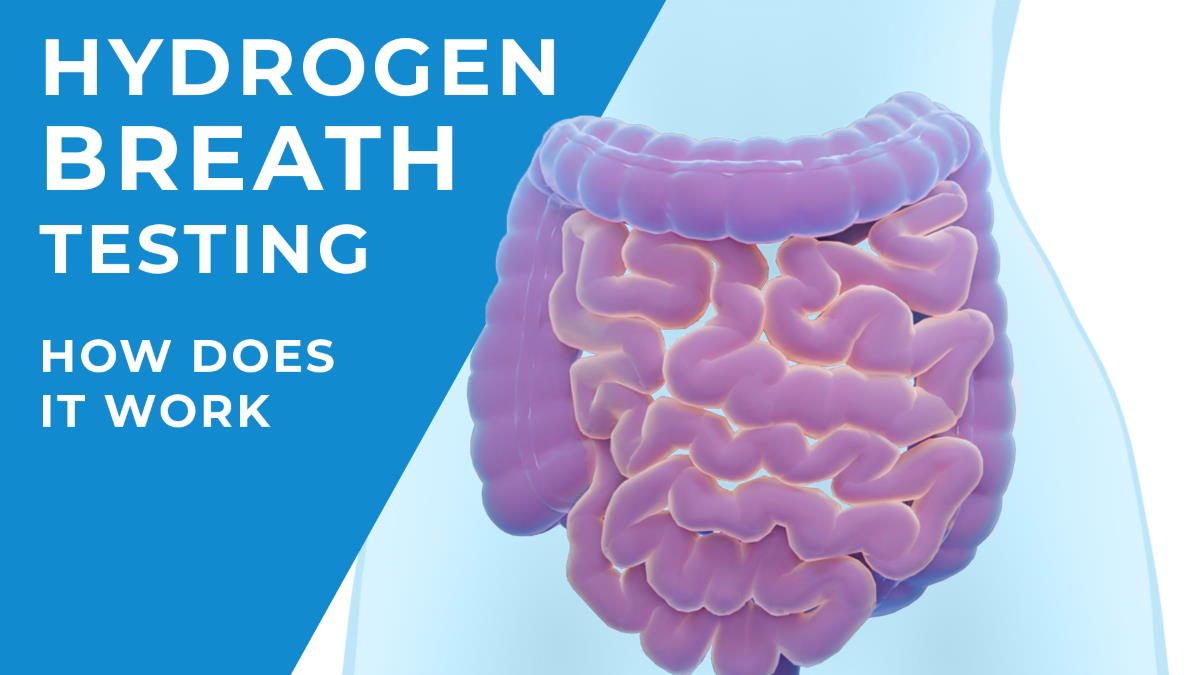
Dr. James Brief
Sometimes I envy doctors in other medical specialties. When a patient comes to a dermatologist, a doctor specializing in skin disorders, the answer to a patient’s problems is sometimes obvious. If a patient presents with a red, itchy, warm and painful area on their wrist directly underneath their new nickel watch, that’s something called contact dermatitis (in other words, an allergic reaction to the metal on the underside of the watch). It’s relatively easy to diagnose and easy to treat.

A patient that goes to an ear, nose & throat specialist complaining of a sore throat with white spots in the back of their mouth? That’s almost definitely strep throat. All it takes is a prescription for antibiotics and they’re better in under a week.
I’m a gastroenterologist and unfortunately, my field doesn’t have many obvious diagnoses.
Patients don’t usually come to me saying “Doc, every time I go to Joe’s Restaurant for some spicy wings, I get heartburn. What do you think the problem is?”
My job is rarely as easy as telling patients to avoid that one obvious food that triggers their symptoms. When I meet a new patient in the office, the initial conversation usually goes something like this:
“Dr. Brief,” the patient might say, “I’ve been having stomach pains for quite some time now. Also some occasional nausea, cramping, bloating and diarrhea.”
When I ask how long these symptoms have been occurring, there is often a pause, followed for a long sigh.
“I’ve been suffering for as long as I can remember…” the patient says.
Further questioning often reveals few clues. Sometimes the symptoms occur immediately following meals, sometimes they don’t. If they do occur with food, there is no obvious culprit. It seems to happen with everything from dairy to Chinese food to bran muffins.
The physical exam is often fruitless as well.
Other than some vague abdominal pain, the examination is usually unremarkable.
So how do I figure out what the problem is? My technique is to start with tests that yield the most information while causing the least amount of inconvenience, pain or discomfort for the patient. While a patient’s health is my primary concern and I will order anything I need to help them, I try not to order expensive tests if there is no specific need to do so.
Blood Tests
Usually, the first test I order is a blood test. I can get a lot of information from a single sample. I usually order the following tests for patients with generalized abdominal pain without an obvious source:
• Complete Blood Count
• Chemistry Panel
• Liver Function Tests
• Pancreatic Function Tests
• Thyroid Function Tests
• Inflammatory Marker tests, such as ESR and CRP
• Celiac Panel
A single blood test can be a great first step to find out what is wrong with a patient’s digestive tract. Sometimes the blood tests tell me where the problem is and I can treat the problem, order the correct follow-up test or refer the patient to the right specialist to address the abnormal test result.
Unfortunately, the blood tests are not perfect. They only address the issues I mentioned above and may not give me the answer I need. For example, a patient with Irritable Bowel Syndrome or Acid Reflux will usually have completely normal blood tests.
Stool Tests
If the blood tests don’t give me the answer that I need, I may have to order stool tests. While it does not involve a needle stick like a blood test, it sometimes causes embarrassment for the patient. With a stool sample, I can look for specific bacterial infections such as salmonella or C. Difficile, inflammatory markers specific for GI inflammation, blood in the stool (which may be invisible to the naked eye), fat, sugar or protein levels in the stool which may be signs of poor digestion in the gut, pancreatic disease or even cystic fibrosis.
Endoscopy
If the stool or blood tests don’t give me the answer I need, the patient may need to have a endoscopy and/or colonoscopy. For these procedures a long, flexible tube with a camera on the tip is inserted into the patient’s mouth or rectum to look at the upper or lower digestive tract, respectively. With the aid of the camera, I can see ulcers, polyps or signs of other diseases. I will usually take biopsies (tissue samples) during these procedures. These tissues samples are stained with certain chemicals and looked at under the microscope to help diagnose disorders such as Celiac Disease, Crohn’s Disease, Ulcerative Colitis, allergies or even cancer.
Unfortunately, endoscopies and colonoscopies are not easy procedures, nor are they completely safe. Colonoscopies require a patient to take a significant amount of laxatives the day before the procedure (in order to clean out the GI tract allowing for maximum visibility or the colon surface). Spending a significant amount of the day on the toilet is neither fun nor comfortable for the majority of my patients. On the day of the procedure, patients require an IV to be inserted. The procedure itself is either carried out under general anesthesia (fully asleep) or sedation (numbed and somewhat disoriented, sometimes called “twilight”). Anesthesia has significant risks, including death. The procedure itself can cause post-procedure pain for hours or days, introduce infections if the equipment is not properly cleaned or cause a tear in the intestinal wall which can be very serious.
Pill Endscopy
An alternative to a colonoscopy or endoscopy is a device called a pill endoscopy. This is a device the size of a large pill that is swallowed by the patient. It has a light and a camera and takes thousands of pictures as it travels through your GI tract before exiting in your stool. It can detect problems such as ulcers or polyps but it cannot take biopsy samples. If the pill endoscopy is inconclusive or if it finds something suspicious I will often have to order the endoscopy and/or colonoscopy anyway.
Imaging Tests
If there is still no answer, I may have to order imaging tests such as X-rays, CT scans, MRIs or ultrasounds. X-rays and CT scans expose the patients to significant amounts of radiation so I do not like to order them unless I think there is a good chance they will give relevant information.
While MRIs do not have radiation side effects, they are expensive and require patients to sit inside the machine anywhere from half an hour to two hours. If you are claustrophobic, an MRI machine is not going to be a fun experience (I have had several patients describe MRIs “as if you’re lying in a coffin for 90 minutes”). Additionally, if you have any metallic devices in your body you cannot have an MRI (most pacemakers are MRI-incompatible).
Ultrasounds can often be helpful in specific cases such as gallstones or pancreatitis. With that said, there are several types of gallstones that are invisible to ultrasound and ultrasound is useless for detecting many other GI disorders.
What happens next?
The tests above are important because the diseases that they can detect are serious. Unfortunately, more often than not these tests will come back negative. This is frustrating for me but even more so for my patients. It’s not easy to be on the receiving end of time-consuming, expensive, embarrassing and sometimes dangerous procedures. This is particularly frustrating when at the end of the entire process, you still do not know the cause of your symptoms.
Sometimes the tests are all negative. That does not mean “it’s in your head.”This is where we enter the realm of functional gastrointestinal disorders, which I will cover in my next post.





